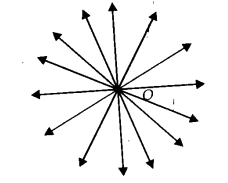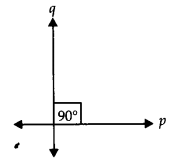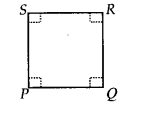| Files Overall Price: | 0.00 | |
| Videos Overall Price: | 0.00 | |
| Total Overall Price: | 0 | |
| Sold By: | Pooja Singla |
Description Above File
NCERT Solutions for Class 9 Maths Chapter 5 Introduction to Euclid Geometry
NCERT Solutions for Class 9 Maths Chapter 5 Introduction to Euclid Geometry are prepared by CBSE student eCARE expert to score good marks in class 9. This chapter contain many topics which are very important to score good in class 9. There are some important topic/Activity mentioned below:
If a point C lies between two points A and B such that AC = BC, then prove that AC = 12 AB, explain by drawing the figure.
Solution:
We have,

AC = BC [Given]
∴ AC + AC = BC + AC
[If equals added to equals then wholes are equal]
or 2AC = AB [? AC + BC = AB]
or AC = 12AB
Download or View Content
Description Below File
Some questions are asked by class 9 students related to Maths
Question 1.
Which of the following statements are true and which are false? Give reasons for your answers.
(i) Only one line can pass through a single point.
(ii) There are an infinite number of lines which pass through two distinct points.
(iii) A terminated line can be produced indefinitely on both the sides.
(iv) If two circles are equal, then their radii are equal.
(v) In figure, if AB – PQ and PQ = XY, then AB = XY.

Solution:
(i) False
Reason : If we mark a point O on the surface of a paper. Using pencil and scale, we can draw infinite number of straight lines passing
through O.


(ii) False
Reason : In the following figure, there are many straight lines passing through P. There are many lines, passing through Q. But there is one and only one line which is passing through P as well as Q.
(iii) True
Reason: The postulate 2 says that “A terminated line can be produced indefinitely.”
(iv) True
Reason : Superimposing the region of one circle on the other, we find them coinciding. So, their centres and boundaries coincide.
Thus, their radii will coincide or equal.
(v) True
Reason : According to Euclid’s axiom, things which are equal to the same thing are equal to one another.
Ex 5.1 Class 9 Maths Question 2.
Give a definition for each of the following terms. Are there other terms that need to be defined first? What are they and how might you define them?
(i) Parallel lines
(ii) Perpendicular lines
(iii) Line segment
(iv) Radius of a circle
(v) Square
Solution:
Yes, we need to have an idea about the terms like point, line, ray, angle, plane, circle and quadrilateral, etc. before defining the required terms.
Definitions of the required terms are given below:
(i) Parallel Lines:
Two lines l and m in a plane are said to be parallel, if they have no common point and we write them as l ? m.

(ii) Perpendicular Lines:
Two lines p and q lying in the same plane are said to be perpendicular if they form a right angle and we write them as p ⊥ q.

(iii) Line Segment:
A line segment is a part of line and having a definite length. It has two end-points. In the figure, a line segment is shown having end points A and B. It is written as AB¯¯¯¯¯¯¯¯ or BA¯¯¯¯¯¯¯¯.

(iv) Radius of a circle :
The distance from the centre to a point on the circle is called the radius of the circle. In the figure, P is centre and Q is a point on the circle, then PQ is the radius.

(v) Square :
A quadrilateral in which all the four angles are right angles and all the four sides are equal is called a square. Given figure, PQRS is a square.

Ex 5.1 Class 9 Maths Question 3.
Consider two ‘postulates’ given below
(i) Given any two distinct points A and B, there exists a third point C which is in between A and B.
(ii) There exist atleast three points that are not on the same line.
Do these postulates contain any undefined terms? Are these postulates consistent? Do they follow from Euclid’s postulates? Explain.
Solution:
Yes, these postulates contain undefined terms such as ‘Point and Line’. Also, these postulates are consistent because they deal with two different situations as
(i) says that given two points A and B, there is a point C lying on the line in between them. Whereas
(ii) says that, given points A and B, you can take point C not lying on the line through A and B.
No, these postulates do not follow from Euclid’s postulates, however they follow from the axiom, “Given two distinct points, there is a unique line that passes through them.”